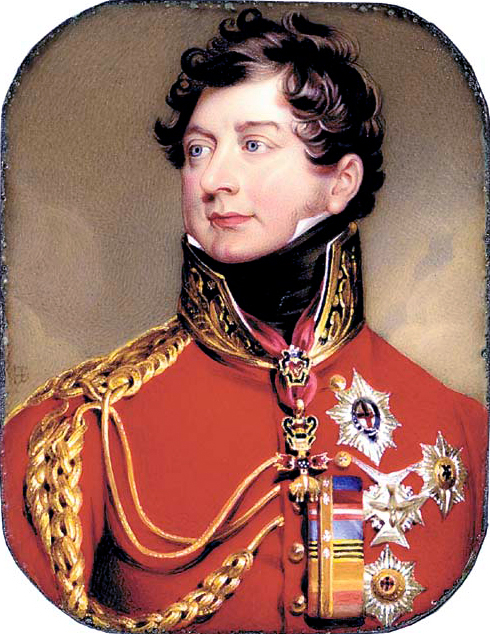The aliʻi attained high social rank in several ways: by heredity, by appointment to political office, by marriage or by right of conquest. The first was determined at birth, the others by the outcomes of war and political processes.
King Kamehameha I conquered most of the islands by late-1795 and negotiated a peaceful unification of the islands under single rule in 1810. Before this, the Hawaiian Islands were ruled by a network of independent island kings (High Chiefs called Aliʻi Nui) through most of its history.
Queen Kaʻahumanu was Kamehameha’s favorite wife; but her role in leadership became more than that. She was, at one time, arguably, the most powerful figure in the Hawaiian Islands, helping usher in a new era for the Hawaiian kingdom.
When Kamehameha died on May 8, 1819, the leadership was passed to his son, Liholiho, who would rule as Kamehameha II. At that time, Kaʻahumanu created the office of Kuhina Nui and would rule as an equal with Liholiho.
Ka‘ahumanu assumed control of the business of government, including authority over land matters, the single most important issue for the Hawaiian nation for many generations to come.
The Kuhina Nui was a unique position in the administration of Hawaiian government and had no specific equivalent in western governments of the day. It has been described in general terms as “Prime Minister,” “Premier” and “Regent.”
The Kuhina Nui held equal authority to the king in all matters of government, including the distribution of land, negotiating treaties and other agreements, and dispensing justice.
Kamehameha III established Hawai‘i’s first constitution in 1840, where the office of Kuhina Nui was first codified. The Kuhina Nui’s primary judicial responsibility over “life and death, condemnation and acquittal” became institutionalized in that constitution (1840.) The Kuhina Nui was also given the duty of presiding, with the King, over the Supreme Court.
Article 45 of the 1852 Constitution of Hawaiian Kingdom stated: “Art. 45. All important business of the kingdom which the King chooses to transact in person, he may do, but not without the approbation of the Kuhina Nui. The King and Kuhina Nui shall have a negative on each other’s public acts.”
The Constitution of 1852 further clarified some of the office’s responsibilities, including its authority in the event of the King’s death or minority of the heir to the throne. The office of Kuhina Nui functioned from 1819 to 1864, through the reigns of Kamehameha II, III, IV and V.
Kaʻahumanu was such a powerful person and Kuhina Nui that subsequent female Kuhina Nui adopted her name, Kīna‘u (Kaʻahumanu II) (1832-1839,) Kekāuluohi (Kaʻahumanu III) (1839-1845) and Victoria Kamāmalu (Kaʻahumanu IV) (1855-1863.) (Keoni Ana (1845-1855) and Mataio Kekūanāo‘a (1863-1864) were the male Kuhina Nui.)
The Constitution (1852 – Article 47) further stated that the Kuhina Nui (Premier), in absence of a Monarch, would fill the vacant office. “Whenever the throne shall become vacant by reason of the King’s death, or otherwise, and during the minority of any heir to the throne, the Kuhina Nui, for the time being, shall, during such vacancy or minority, perform all the duties incumbent on the King, and shall have and exercise all the powers, which by this Constitution are vested in the King.”
This situation occurred once, when Kuhina Nui Victoria Kamāmalu (Kaʻahumanu IV) assumed the powers of the monarchy – and, was conceptually “Queen” for a day – the first sole-ruling female of the Kingdom of Hawaiʻi. Here’s how it happened.
On April 6, 1853, Alexander Liholiho was named successor to the office of the Constitutional Monarch by King Kamehameha III, in accordance with Article 25 of the Constitution of 1852. Article 25 provided that the “…successor (of the Throne) shall be the person whom the King and the House of Nobles shall appoint and publicly proclaim as such, during the King’s life…”
Alexander Liholiho succeeded Kamehameha III on December 15, 1854 (at the death of Kamehameha III) and served as Kamehameha IV.
Victoria Kamāmalu became Kuhina Nui in 1855 by appointment by her brother, Alexander Liholiho (Kamehameha IV.) Kamehameha IV ruled for nine years; he died unexpectedly on November 30, 1863, without naming a successor.
Following the provisions of the Constitution, on November 30, 1863, Kuhina Nui Victoria Kamāmalu became the first female Head of State in Hawaiʻi (149-years ago, today.)
After consulting with the Privy Councilors, Kuhina Nui Victoria Kamāmalu proclaimed in front the Legislature:
“It having pleased Almighty God to close the earthly career of King Kamehameha IV, at a quarter past 9 o’clock this morning, I, as Kuhina Nui, by and with the advice of the Privy Council of State hereby proclaim Prince Lot Kamehameha, King of the Hawaiian Islands, under the style and title of Kamehameha V. God preserve the King!”
Kamehameha V had not named a successor to the throne before he died on December 11, 1872. Lunalilo, heir apparent to the throne, wanted his people to choose their next ruler in a democratic manner and requested a vote be held on New Year’s Day following the death of Kamehameha V.
He therefore noted, “Whereas, it is desirable that the wishes of the Hawaiian people be consulted as to a successor to the Throne, therefore, notwithstanding that according to the law of inheritance, I am the rightful heir to the Throne, in order to preserve peace, harmony and good order, I desire to submit the decision of my claim to the voice of the people.” (Lunalilo, December 16, 1872)
Prince David Kalākaua and others not in the Kamehameha lineage, chose to run against Prince Lunalilo. The people on every island unanimously chose William Charles Lunalilo as King. (lunalilo-org)
At noon on January 8, 1873, the Legislature met, as required by law, in the Courthouse to cast their ballots of election of the next King. Lunalilo won – the first elected King of Hawaiʻi (officially elected by the Legislative Assembly.)





























